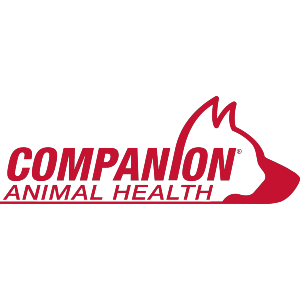What is Regenerative Medicine?
Regenerative medicine is a fast-emerging branch of veterinary medicine in which the body’s own cells are used to heal and ultimately regenerate damaged tissues in acute and chronic conditions. This area of medicine includes platelet rich plasma (PRP) and stem cell therapies.
-
Platelet-Rich Plasma (PRP)
Platelet-rich plasma is an autologous (self-derived) conditioned plasma that contains a high concentration of platelets. Platelets contain numerous growth factors that facilitate tissue repair and healing. These growth factors are contained in the alpha granule portion of the cell and are released from the platelet when it is activated (usually at an area of injury). A few examples of these growth factors are Transforming Growth Factor β (TGF-β), Platelet-Derived Growth Factor (PDGF), Insulin-like Growth Factor (IGF-1), Vascular Endothelial Growth Factor (VEGF), Epidermal Growth Factor (EGF), and Fibroblast Growth Factor (FGF). The roles of these growth factors range from vessel development and repair to cellular recruitment and activation.
-
Stem Cells
Stem cells may be classified into two groups based on their origin: embryonic and adult stem cells. For all intents and purposes, we will focus on adult stem cells. Adult stem cells are found in every tissue of the body, including bone marrow, adipose tissue, skin, and the liver. These cells have the ability to differentiate into any type of tissue (pluripotent) under the appropriate circumstances and can additionally activate surrounding cells to aid in wound healing and tissue repair. Stem cells can also go through several cycles of cell division/replication without differentiating into a specific tissue type.
Indications for Use
Regenerative therapies, including platelet-rich plasma (PRP) and bone marrow aspirate concentrate (BMAC) stem cell therapies, can be used for a wide range of conditions, including
Osteoarthritis
Ligament injuries
Tendon injuries
Burn wounds
Open wounds
Bone grafts
Certain spinal conditions
-
How it Works
Regenerative medicine helps the body utilize its own cells to stimulate recovery. Read below about how platelet rich plasma (PRP) and stem cell therapy work.
-
-
Platelet Rich Plasma (PRP)
Platelet-rich plasma contains numerous growth factors that facilitate tissue healing and repair. Growth factors are small proteins that are contained within a compartment inside the platelet called the alpha granule. When a platelet is exposed to an area of damage or to fibrinogen, it becomes activated and changes its shape so that the alpha granule releases its growth factors. These growth factors play an important role in tissue repair by promoting new vessel formation, enhancing cellular proliferation, and promoting extracellular matrix formation.
-
-
-
Stem Cells
When stem cells are injected in a concentrated form, they perform various functions to repair and regenerate tissue. They have the ability to differentiate into the surrounding tissue types, which can include bone, cartilage, tendon, ligament, muscle, and nervous tissue. Other primary functions of stem cells in regenerative therapy include
-
Activating surrounding resident stem cells
-
Stimulating new blood supply
-
Recruiting additional cell types to aid in tissue repair and cleanup
-
Stimulating healing and tissue growth with the release of cytokines and growth factors
-
Decreasing inflammation by moderating inflammatory pathways
-
Reducing and/or eliminating scar tissue
-
Creating a scaffold for healing tissues via extracellular matrix
-
-
-
-
System Validation
When it comes to choosing a PRP and stem cell isolation system, the most important question to ask is whether the system is validated for use in canine patients. There are numerous isolation systems available, but very few are specifically validated for use in dogs.
-
The Companion Regenerative Therapies (CRT) system has been specifically validated for use in canine patients. In a multicenter study,* the CRT Pure PRP system was the only system that increased platelet concentration while significantly reducing the red blood cell and neutrophil concentrations.
-
Why is it Important to Reduce Neutrophils and Red Blood Cells (RBCs)?
Neutrophils
- Multiple studies show that neutrophils increase concentrations of unwanted inflammatory mediators (IL-1β, TNF-α, IL-6, IL-8)
- Increased concentrations of neutrophils in PRP are positively correlated with an increased MMP-9 concentration, which leads to the degradation of collagen and other extracellular matrix molecules.
Red Blood Cells
- RBCs damage cartilage and synovium directly via iron-catalyzed formation of Reactive Oxygen Species (ROS)
- RBCs increase the concentration of unwanted inflammatory mediators (IL-1 and TGF-α)
- PRP with a high concentration of RBCs caused significantly more synoviocyte death when compared to PRP preparations with a lower RBC count
References
Braun HJ, et al., Am J Sports Med. 2014
Sundman EA, et al. Am J Sports Med. 2013
* Carr, B, Canapp, S. et al. “Canine Platelet Rich Plasma Systems: A Multicenter, Prospective Analysis.” (2015) Awaiting publication.
-

